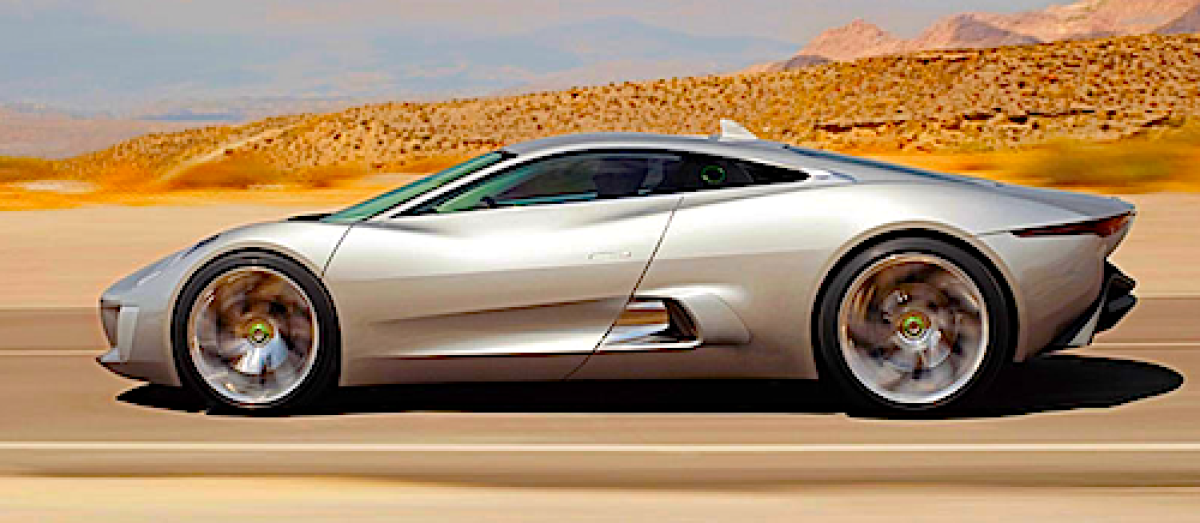The two-seat plug-in hybrid, PHEV concept debuted at the 2010 Paris Motor Show and stunned the world, now announcing a highly limited production. Jaguar is doing a lot to reclaim its title of innovation, performance and beauty and if its effect was to say they are here and serious about the company, then Tata did just that.
Technically Speaking. This C-X75 packs a lot of power with its 778 hp in-hub electric motors, four altogether each rated at 145 kW, 194 hp. The total torque output is a jaw dropping 1,180 ft-lb. The C-X75 has lofty goals of reaching 205 mph with a 0 to 60 in 3.4 seconds, all of this powered by a 15kWh lithium ion battery pack weighing in at only 410 lb.
Fitting a 110 lb electric motor in a wheel has several advantages, foremost important is reducing unsprung weight but the challenges are plenty. For one thing, what happens in the case of a motor failure? The inertia of the dead motor would compromise the balance of the car. This drivetrain configuration has the ability to dose torque, hp, braking, and slip independently to each wheel in order to achieve a perfect balance in all conditions. The famed tire maker Michelin has done a lot of research in this department. Yet, the most interesting part of this concept was the fact that it didn’t use a piston engine but a more intelligent diesel turbine feeding the battery pack. A turbine can be tweaked for the highest specific output in order to act as a generator in a highly efficient way. Add to the fact you can throw at it almost any type of energy source, from gasoline to hydrogen and you have a highly versatile power unit that is very compact, very light with very low emissions.
The Performance Numbers. The original gas turbines would have enough electricity to extend the range to 560 miles with little CO2 emission. The battery range was estimated at 68 miles.
So why haven’t carmakers pushed turbine powered hybrids? The answer may lie in the fact that turbines require very little maintenance and that public education is almost non-existent. In other words, carmakers will make more money maintaining a piston engine than a turbine. Also, mechanics are already trained to work on piston engines and repairing turbines would mean expensive re-education. The last point is that hybrid gas engines have developed well these last few years, pushed by the recession to achieve much higher efficiency than before. Nonetheless, Jaguar will produce its highly exclusive C-X75, 250 of them to the tune of $1,100,000 and $1,500,000.





